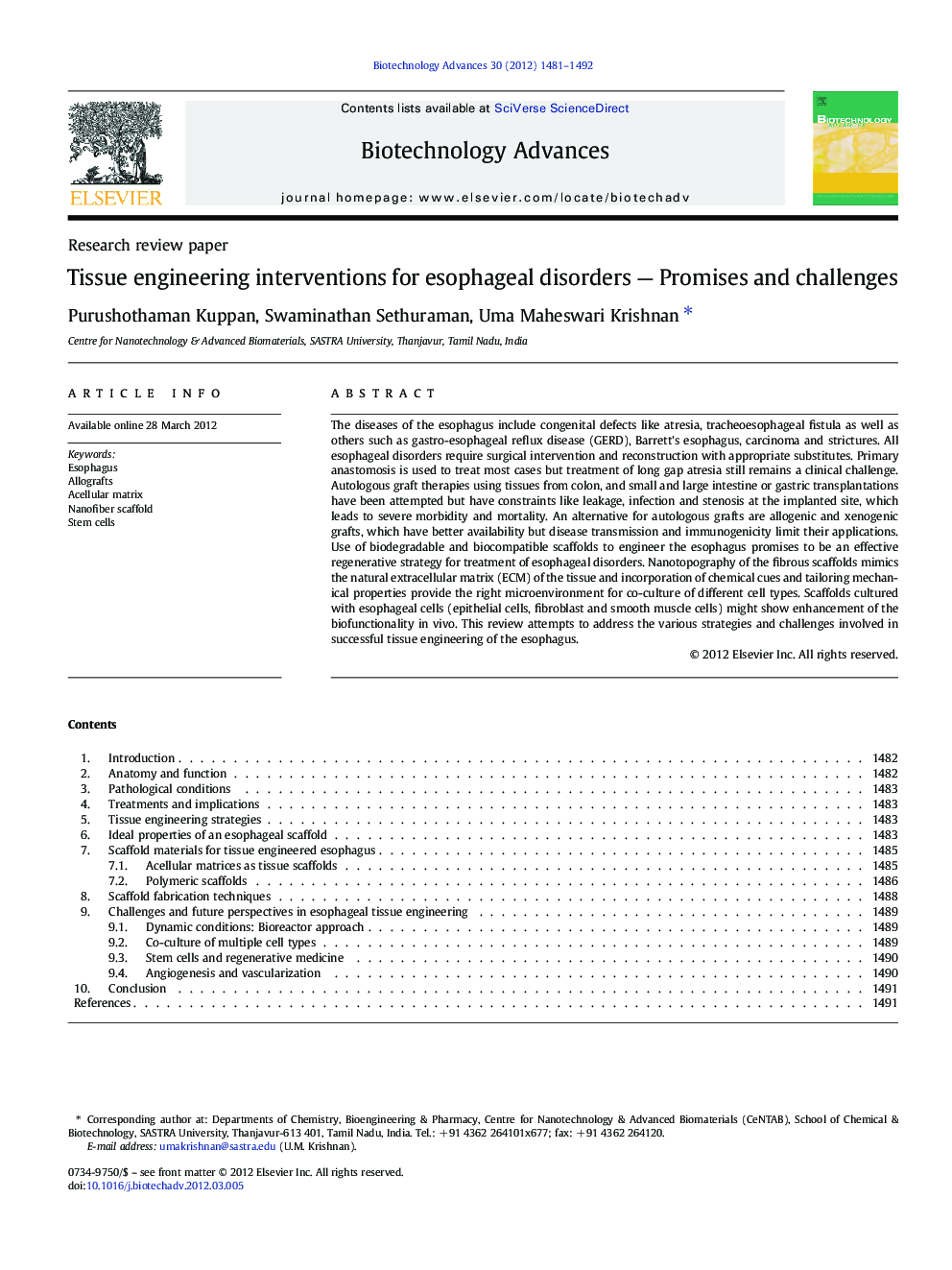| Article ID | Journal | Published Year | Pages | File Type |
|---|---|---|---|---|
| 6486746 | Biotechnology Advances | 2012 | 12 Pages |
Abstract
The diseases of the esophagus include congenital defects like atresia, tracheoesophageal fistula as well as others such as gastro-esophageal reflux disease (GERD), Barrett's esophagus, carcinoma and strictures. All esophageal disorders require surgical intervention and reconstruction with appropriate substitutes. Primary anastomosis is used to treat most cases but treatment of long gap atresia still remains a clinical challenge. Autologous graft therapies using tissues from colon, and small and large intestine or gastric transplantations have been attempted but have constraints like leakage, infection and stenosis at the implanted site, which leads to severe morbidity and mortality. An alternative for autologous grafts are allogenic and xenogenic grafts, which have better availability but disease transmission and immunogenicity limit their applications. Use of biodegradable and biocompatible scaffolds to engineer the esophagus promises to be an effective regenerative strategy for treatment of esophageal disorders. Nanotopography of the fibrous scaffolds mimics the natural extracellular matrix (ECM) of the tissue and incorporation of chemical cues and tailoring mechanical properties provide the right microenvironment for co-culture of different cell types. Scaffolds cultured with esophageal cells (epithelial cells, fibroblast and smooth muscle cells) might show enhancement of the biofunctionality in vivo. This review attempts to address the various strategies and challenges involved in successful tissue engineering of the esophagus.
Related Topics
Physical Sciences and Engineering
Chemical Engineering
Bioengineering
Authors
Purushothaman Kuppan, Swaminathan Sethuraman, Uma Maheswari Krishnan,
